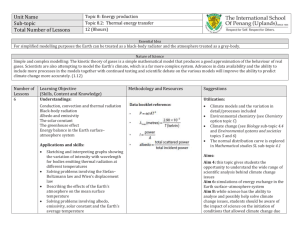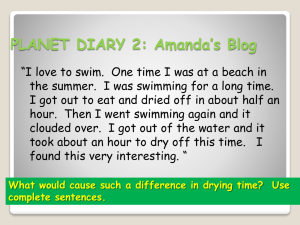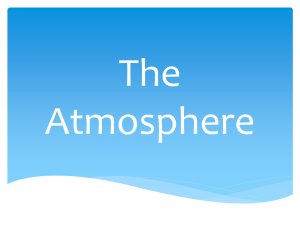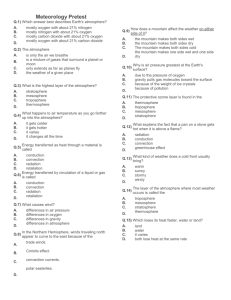Unit 1B Homework KEY
advertisement
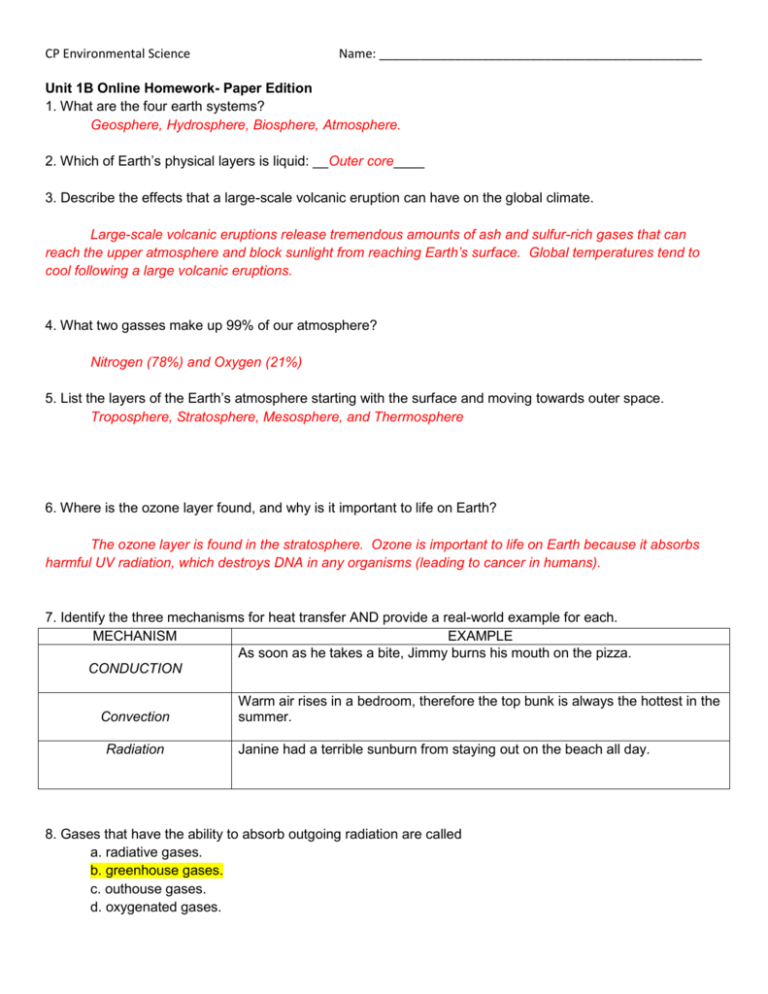
CP Environmental Science Name: _______________________________________________ Unit 1B Online Homework- Paper Edition 1. What are the four earth systems? Geosphere, Hydrosphere, Biosphere, Atmosphere. 2. Which of Earth’s physical layers is liquid: __Outer core____ 3. Describe the effects that a large-scale volcanic eruption can have on the global climate. Large-scale volcanic eruptions release tremendous amounts of ash and sulfur-rich gases that can reach the upper atmosphere and block sunlight from reaching Earth’s surface. Global temperatures tend to cool following a large volcanic eruptions. 4. What two gasses make up 99% of our atmosphere? Nitrogen (78%) and Oxygen (21%) 5. List the layers of the Earth’s atmosphere starting with the surface and moving towards outer space. Troposphere, Stratosphere, Mesosphere, and Thermosphere 6. Where is the ozone layer found, and why is it important to life on Earth? The ozone layer is found in the stratosphere. Ozone is important to life on Earth because it absorbs harmful UV radiation, which destroys DNA in any organisms (leading to cancer in humans). 7. Identify the three mechanisms for heat transfer AND provide a real-world example for each. MECHANISM EXAMPLE As soon as he takes a bite, Jimmy burns his mouth on the pizza. CONDUCTION Convection Radiation Warm air rises in a bedroom, therefore the top bunk is always the hottest in the summer. Janine had a terrible sunburn from staying out on the beach all day. 8. Gases that have the ability to absorb outgoing radiation are called a. radiative gases. b. greenhouse gases. c. outhouse gases. d. oxygenated gases. CP Environmental Science Name: _______________________________________________ 9. Which process of the water cycle is responsible for cloud formation? Condensation 10. One of the most important functions of the world ocean is to a. absorb and store solar energy b. circulate water around Earth’s surface. c. provide habitat for many organisms. d. hide all of our trash and nuclear waste. 11. What is an aquifer? An aquifer is a rock formation that allows for the storage and transport of groundwater. 12. Which two processes are reversals of each other? a. convection and conduction b. condensation and evaporation c. precipitation and radiation d. evaporation and conduction 13. Earth is considered a closed system because a. energy can come and go, but matter never leaves. b. energy and matter cannot leave Earth. c. matter can come and go, but energy can never leave. d. none of the above. 14. How do convection currents work to transfer heat in Earth’s atmosphere? When the air near the ground is heated, it rises due to convection. Cooler air moves in to take its place to create a current (wind). Because of convection, heat energy is transferred to more of the atmosphere instead of being stuck at the ground. 15. Math Practice: A volcanic eruption releases ash at a rate of 5,000 kg/min. How many kilograms of ash would the volcano release if it erupted consistently over a span of 24 hours? Show your work and write your answer in scientific notation. DIMENSIONAL ANALYSIS- REMEMBER CHEMISTRY? 5000 kg/min * 60 min/hr *24 hr = 7,200,000 kg ash = 7.2 x 106 kg ash
